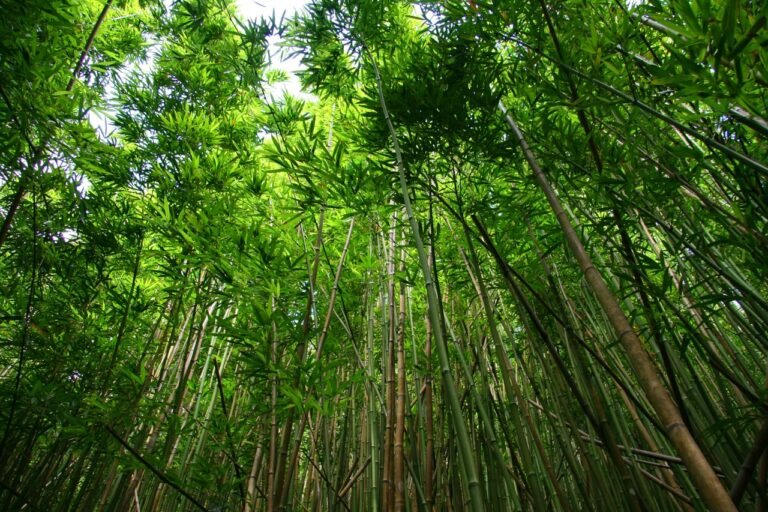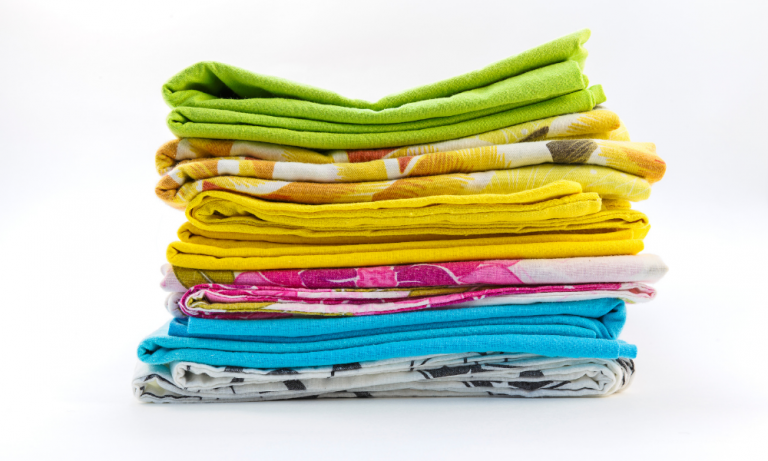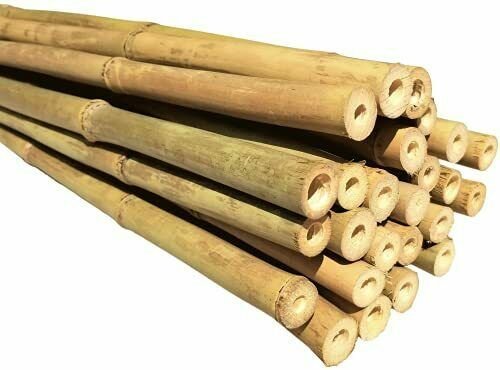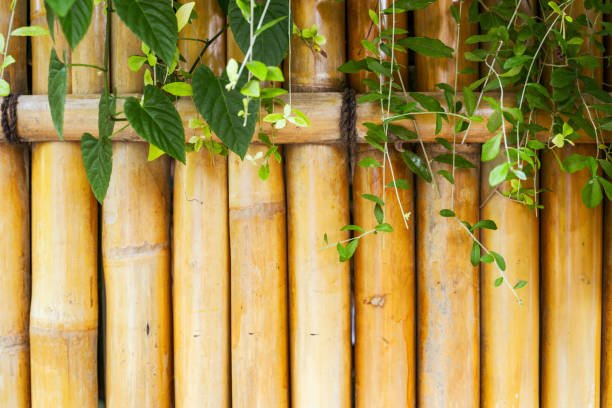Top Guide on Working With Bamboo Wood
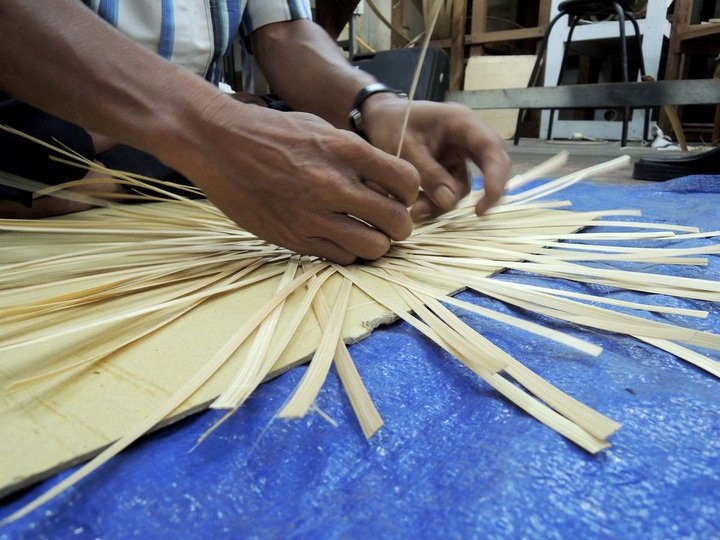
Want to learn how bamboo wood can help your work? It has been utilized for centuries in many civilizations for building, furniture, and household goods since Bamboo is a flexible and renewable material. It is a kind of grass that can be collected regularly without causing any damage to the plant or the environment and grows quickly. Bamboo wood is a great option for various applications since it is sturdy, lightweight, and resilient.
The expertise and methods needed to work with bamboo wood differ from those for other wood forms. For instance, before Bamboo can be utilized for construction or crafts, its tough outer covering must be removed. Additionally, Bamboo is prone to cracking and splitting, so it’s important to use the right equipment and methods to protect the wood.
Working with bamboo wood may be gratifying despite these difficulties. Due to its distinctive qualities and sustainability, the material is a desirable choice for those looking to design environmentally friendly projects or add a dash of exotic flair. Learning how to work with Bamboo may expand the possibilities for your projects, whether you’re a professional carpenter or a hobbyist. Keep reading to learn more.
What is Bamboo?
Unique to Indochina & the southern Chinese province of Yunnan, Bamboo has been widely planted and grown throughout many other regions. It is widely grown in Southeast Asia, Africa, Australia, and South America’s tropics and subtropics. Despite being famous for their ability to produce food, they are uncultivated, naturally occurring plants. The outstanding qualities of Bamboo distinguish them from other types of wood. Unlike other woods, they can withstand adverse weather conditions.
They develop more quickly and are ready for harvesting after 4 to 5 years. Their capacity for regeneration after cutting distinguishes them from other species. Bamboo has a wide range of applications, including those for ornamentation, healing, the creation of textiles, charcoal, & biofuel energy sources. The young bamboo stalks are also well-liked as a food source. Bamboo has recently been more widely used in building and furniture manufacturing. Consumers who care about the environment and favor sustainable goods value them most.
Characteristics of Bamboo Wood

Most Bamboo used for commercial purposes is of the Moso species, mostly imported from Asia. It has some traits that are comparable to those of red oak. Bamboo has a finer texture and is tougher but lighter than red oak. However, Bamboo’s extremely quick growth rate plays a significant role in why it is so prized as a building material. Additionally, because it grows from the original rootstock, the plant doesn’t perish when the Bamboo is harvested.
Although raw Bamboo must be shipped from distant countries, it is frequently hailed as a “green” and sustainable material. However, it must go through a lot of processing before it can be turned into lumber products for making furniture and other things. The segments of a bamboo stem are hollow tubes with walls. They must be separated into strips & laminated with high-pressure adhesives to create boards, panels, and veneer.
Bamboo is a grass popular for its quick growth and adaptability in various uses, including flooring, furniture, and construction materials. These bamboo wood characteristics are listed.
🌲Durability
Bamboo is quite resilient and is comparable in strength to hardwoods like oak & maple. It can endure great pressure without breaking & splintering because of its strong tensile strength.
🌲Sustainability
Bamboo is sustainable since it can be collected without harming the plant or the environment every three to five years and grows swiftly. Additionally, it is biodegradable, which enables recycling and prevents pollution.
🌲Density
Because Bamboo is such a dense material, it’s perfect for flooring & furniture. It is less prone to warp or bends over time than other varieties of wood and is more resistant to dents and scratches.
🌲Appearance
With a straight grain pattern & a light, natural tint, Bamboo has a distinctive look. Although it can be stained and dyed to resemble other types of wood, many people prefer its natural beauty.
🌲Moisture Resistance
Bamboo may be utilized in damp environments like kitchens and bathrooms where conventional hardwoods would also not hold up because of its moisture resistance. The Bamboo must still be properly sealed, however, to avoid water damage. Bamboo wood is a beautiful, long-lasting, sustainable material with several useful uses.
🌲Varieties
Although it tends to splinter a little when cut against the grain, Bamboo is incredibly simple to machine with standard woodworking tools. In addition, Bamboo is inherently moisture-resistant. Although a finish is still advised, this feature makes it suitable for items including cutting boards & countertops.
Working with Bamboo Wood

From furniture and flooring to apparel and accessories, Bamboo is a well-liked and environmentally friendly material utilized in many items. There are a few considerations to make while dealing with bamboo wood to guarantee that your product works out nicely and lasts for many years.
👉Choose the Appropriate Bamboo.
There are several varieties of Bamboo, each with a unique set of traits. Whether you’re building furniture, flooring, or anything else, use the appropriate Bamboo for the job.
👉Prepare your Bamboo.
It’s crucial to prepare Bamboo before you begin working with it properly. To achieve the desired size and form and get rid of any knots or other flaws, the Bamboo may need to be planed or sanded.
Use the proper equipment.
It’s crucial to utilize the appropriate equipment for the task since Bamboo may be a challenging material. Bamboo will be simpler to cut through and shape if you have a drill, sharp saw, or other cutting instrument.
👉Observe the Grain
When working with Bamboo, just like other kinds of wood, you need to be aware of its grain. To prevent splintering or other damage, be sure you are cutting and sanding in the correct direction.
👉Complete your Bamboo
After you’ve finished your project, finishing the Bamboo is crucial to give it protection and a polished appearance. To accentuate the inherent beauty of the Bamboo, add a stain, clear coat, or other treatment. It may be gratifying and enjoyable to work with bamboo wood. These suggestions can help you produce stunning, environmentally friendly projects that will endure for many years.
Designing with Bamboo Woods
Bamboo is one of the few timbers that are as easily associated with Asian furniture designs. Almost all bamboo-based projects have an Asian aesthetic. You may utilize Bamboo for practically every project component thanks to the large range of bamboo goods that are now available.
Use in Design
The good news is that only some projects component have to be built of Bamboo to benefit from the appearance. The drawer sides of this case are made out of maple, a less costly wood. Similar cost reductions might be achieved by utilizing Bamboo for a project’s exposed components while using a secondary wood for the case.
Another option is to utilize easily accessible hardwoods throughout the project and cover certain key areas with bamboo veneer. Veneer made of Bamboo is offered in 4′ x 8′ sheets with thicknesses ranging from 0.6mm and above. Often, a subtle but noticeable detail suffices to convey the desired style. Bam-boo may be used to make inlays, legs, trim, door handles, drawer knobs, and other distinctive characteristics.
Bamboo’s end grain may be fairly visible, particularly on large panels. This look might be desirable on some projects, but it’s also simple to hide in places where it seems overly “busy.” For this use, bamboo edging is offered. Every project may need to be a better fit for Bamboo. However, it gives a distinct aesthetic that might look fantastic on the proper piece of furniture if you’re looking to try something different.
Common Uses of Bamboo Woods
Bamboo is a sustainable and adaptable material with a wide range of applications. Here are a few of the most typical applications for bamboo wood.
◼️Construction
Bamboo has been utilized for millennia in buildings because it is a flexible and ecological material. It is the best option for various applications because of its strength, resilience, and quick development. Due to its eco-friendliness & aesthetic appeal, Bamboo has grown in popularity in the building sector over the last several years. Laminates, Bamboo poles, and composites are used in bamboo wood buildings to build various structures, including walls, floors, and roofs.
Before being put together into frames and woven into mats that may be utilized as wall or floor coverings, the poles are chopped and treated. Additionally, furniture and decorative accents can be made from bamboo laminates. As Bamboo absorbs greater carbon dioxide from the atmosphere during its growth and harvest than it emits, bamboo wood construction has the advantage of being a carbon-neutral building material. It is a desirable solution for sustainable building because of its renewability and adaptability.
◼️Furniture
It’s crucial to bear in mind that bamboo wood is a natural material that needs adequate upkeep and care while dealing with it. It is advised to frequently apply a protective layer of oil or wax to keep the wood from drying out or cracking. Additionally, it’s important to keep bamboo furniture out of direct sunlight to prevent color fading and wood loss over time.
Furniture made of bamboo wood may be found in various classic and contemporary designs. The natural texture & color of Bamboo can offer warmth and personality to any space, and it’s simple to discover items that match your style and décor. Due to its strength, sustainability, and adaptability, bamboo wood furniture is a great option whether you’re looking for a practical or statement piece.
◼️Flooring
An excellent substitute for conventional hardwood flooring is bamboo wood flooring. Bamboo is a rapidly expanding plant collected for its resemblance to wood, making it an environmentally friendly and sustainable material. Bamboo flooring is renowned for its toughness and moisture resistance, perfect for high-traffic areas like hallways, kitchens, and entryways. As it does not trap dust or different allergens like carpeting can, it is also a great option for people with allergies or asthma.
To guarantee that the flooring is laid correctly and will endure for many years, picking a renowned brand and installation is crucial when choosing bamboo wood flooring. Bamboo wood flooring is a practical & fashionable option for any house because of its distinctive appearance and eco-friendly features.
◼️Paper
Bamboo has been used for generations to create a wide range of items because it is adaptable and sustainable. The Bamboo is a popular option for construction materials because of its strength and longevity. Bamboo is often used to make paper. Due to its environmental friendliness—Bamboo grows quickly and uses less water than other trees used to make paper—bamboo paper is gaining popularity.
Bamboo paper is a popular option for high-quality printing & writing since it is also renowned for its resilience and smooth texture. The prominent construction material is bamboo wood. It is often used for furniture, flooring, as well as structural beams. Bamboo wood is a fantastic material for outdoor usage since it is exceptionally sturdy, flexible, and moisture-resistant. Bamboo can grow at least twenty-four inches daily, making it a sustainable construction material. It is also a renewable resource.
◼️Textiles
Bamboo wood fabrics are becoming more and more well-liked in the fashion sector because of their distinctive qualities and sustainability. Bamboo wood is an ecologically favorable material for textile manufacturing since it grows quickly, is renewable, and needs fewer pesticides and water than other crops. The wood is transformed into fibers, spun into yarn, and sewn into cloth.
The resultant material is soft, lightweight, and breathable, making it perfect for clothes like dresses, shirts, and undergarments. Natural antibacterial qualities in bamboo wood textiles also prevent bacterial development and odor, making them a great option for athletic wear.
◼️Utensils
Due to its longevity and eco-friendliness, bamboo wood utensils are a preferred option for many individuals. Fast-growing and environmentally friendly, Bamboo may be harvested without endangering the environment. Additionally, it is naturally antibacterial, making it a fantastic kitchenware material. Utensils made of bamboo wood are portable, simple to clean, & resistant to stains, heat, and smells.
They are ideal for regular kitchen use and may be used to prepare and serve various foods. To preserve the life of bamboo wood kitchenware, adequate care must be given to them. To avoid warping, they should be hand cleaned in warm, soapy water & dried very away.
◼️Musical Instruments
Since ancient times, musical instruments have been made from durable and adaptable bamboo wood. Bamboo gives a special and unusual sound that is well-liked by artists all around the globe on instruments, including marimbas, xylophones, flutes, and clarinets.
The Bamboo wood’s low weight makes it simple to handle and play with for lengthy periods and is one of its key attractions. Bamboo is also inherently pest and moisture-resistant, making it a great material for outdoor events and damp environments.
Processing Characteristics and Suggestions

The Calcutta bamboo, the most prevalent Bamboo in Indian forests and a highly significant plant in India and other tropical Asian nations has the qualities described in this article.
✔️Stability
For Calcutta bamboo, the connection between relative moisture and humidity content is similar to the conventional tables used for wood throughout North America. Additionally, the shrinkage is comparable to oak, with a three percent change in MC translating into a 1 percent change in size. However, in the radial & tangential directions, shrinkage and swelling are essentially the same.
End checking is a concern as a result. However, it is reduced by the use of cross-laminated plywood construction. In other words, much like oak and other premium timbers, Bamboo has to be managed properly regarding storage humidity and moisture concerns. We may anticipate some drying within our North American surroundings since most of the Bamboo will originate from a humid and tropical region. To prevent shrinking in a final product, it would be wise to expose Bamboo to a drier environment, particularly during the winter.
✔️Drying
Drying of Bamboo will always take place on the production line. Drying is relatively easy. While drying, shrinkage resembles that of oak; there is little distinction between radial & tangential shrinkage.
✔️Density
Bamboo is equivalent to oak in density, at roughly forty pounds per cubic foot. The bamboo panels weigh more than an oak plywood panel of the same thickness since most oak plywood employs a lesser density species for the inner plies because the bamboo panels will be made entirely of Bamboo.
✔️Machining and Gluing
When creating a laminated product, Kolkata bamboo adheres to glue well. Because of the high density, surfaces must be properly prepared. To find the ideal adhesive spread rates, considerable testing may be necessary. PUR adhesive is a great option for furniture and cabinet businesses bonding bamboo components.
Bamboo is considered extremely well machined, but there will be variety as species alter. In the literature, I could not locate any cases of allergic responses brought on by contact with bamboo dust.
✔️Stability
For Calcutta bamboo, the connection between relative moisture and humidity content is similar to the conventional tables used for wood throughout North America. Additionally, the shrinkage is comparable to oak, with a three percent change in MC translating into a 1 percent change in size. However, in both radial and tangential directions, shrinkage & swelling are the same.
Frequently Asked Questions
Is Bamboo a suitable material for crafting?
For various reasons, Bamboo is a superior option to other wood planks. Bamboo is superior to wood in all ways, including environmental friendliness, water resistance, strength, soil protection, cost, and contribution to air quality.
Is strong wood Bamboo?
Bamboo is exceptionally sturdy and grows remarkably quickly compared to other wood forms. Bamboo is a highly well-liked and environmentally friendly construction material because of its toughness and quick development.
What are bamboo wood’s drawbacks?
However, there are several drawbacks: It must first be manufactured before it can be considered solid. Since Bamboo is produced and exported by many nations, there are no quality standards. Absorption to formaldehyde or various VOCs is a possibility.
Is bamboo wood soft or hard?
Bamboo is not a hardwood or a softwood but rather a wood derived from the enormous bamboo Moso grass species. When the Bamboo is mature, which means the cellulose is fully grown and the wood is firm and hard, the bamboo stem is harvested from the bamboo forest.
Is bamboo wood durable?
Tough and long-lasting – high-quality bamboo flooring is thick, durable, and even tougher than certain hardwoods. As a result, it is robust, structurally solid, and tough, able to survive as long as 50 years with proper care and maintenance. It’s also termite-proof.
Final Thoughts
Working with bamboo wood may be gratifying and environmentally friendly. This adaptable material’s strength, longevity, and environmental friendliness are only a few of its numerous advantages. Bamboo may be processed and finished in various ways, while some difficulties may be involved, provided the correct methods and equipment are used. We can promote the development of this renewable resource and help create an environmentally friendly future by choosing to work with Bamboo. Do you want to how is bamboo toilet paper made? Click Here!


